Students traditionally stay at Wesleyan for only four years, but many faculty members settle in long-term and have a front row seat to watch the University’s evolution. A large number of professors have been a part of the staff for 20 years or more, including one professor who has been at Wesleyan for the past 52 years.
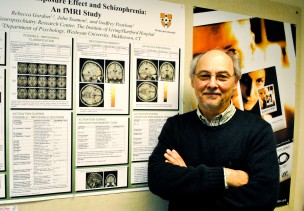
Shannon Welch/Photo Editor
Professor of Psychology and Neuroscience John Seamon, who has been at the University for 40 years, explained that over the course of his career he has seen the school evolve in significant ways.
“The biggest change is in the number of people—there’s just a lot more students now than when I came [in 1972],” Seamon wrote in an email to The Argus. “Early on, I could regularly teach core psychology classes to 10-12 students; now we cap these courses at 35. Similarly, in our research, we could previously offer multiple one-on-one tutorials; now we typically provide small group tutorials.”
Seamon added that the student body has become a lot more diverse with regards to ethnic and cultural backgrounds.
“I get to talk and work with students from all over the world, and that’s pretty exciting,”
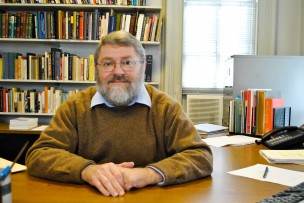
Shannon Welch/Photo Editor
he wrote.
The demographics of the faculty have changed as well: when Professor of Religion Ron Cameron began teaching in 1981, there was only one woman in the department; now three of the six faculty members are women. Current professors also possess different skills than faculty of the past.
“Another major difference is that everyone used to be trained as readers of text,” Cameron said. “Now three of our faculty [members] are ethnographers trained in anthropology as well.”
Professor of Environmental Studies and Chair of the Biology Department Frederick Cohan, who has been at Wesleyan for 26 years, commented that the increase in sheer numbers has also brought about a change in the intellectual make-up of the departments.
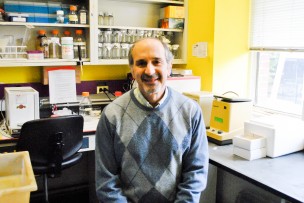
Shannon Welch/Photo Editor
“When I was hired in 1986, there was only one evolutionary biologist, so I made two,” Cohan said. “Now we have five evolutionary biologists in our department, which actually turns out to be a kind of typical percentage among life sciences at many universities.”
According to Professor of Economics and Environmental Studies Gary Yohe, who has been at Wesleyan for more than 30 years, some things have stayed the same, such as the quality of the students and their intellectual abilities.
“Their inquiring mind and ability to do arithmetic, write, think, and ask questions is still
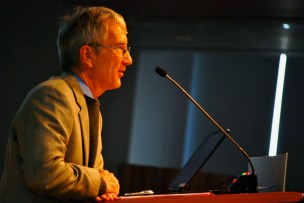
c/o NPCC
the same,” Yohe said. “The advice that I give to visiting faculty, new faculty, and so on, has not changed in 30 years: the biggest mistake that you can make for a Wesleyan classroom is to over-prepare. You need to have four or five or ten points that you want to get through in this hour and a half, but how you get there is going to be determined by what the students bring forward.”
Though faculty members’ relationships with students have remained consistent, their connection to the area has shifted. While professors once lived within a very small radius of campus, many now commute from Boston and New York. Chair of the Film Studies Department Jeanine Basinger, who has taught at Wesleyan for over 40 years, explained that their former proximity allowed professors to be better represented and more unified at campus events.
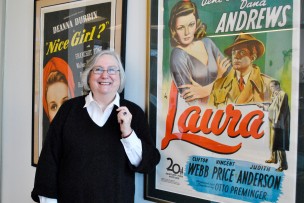
Shannon Welch/Photo Editor
“If the Theater Department was putting on a play or the Music Department was performing a concert, everybody walked over in the evening to watch it together,” Basinger said.
Furthermore, as Basinger recalled, there used to be more interaction among professors across departments.
“The center of things was the basement of Downey House, where there was the post office and a café,” she said. “There were always big tables where colleagues from different departments would sit down together. It was an informal community with maximum access to one another. I don’t see that anywhere now. There are people working in the buildings next door to me that I probably haven’t set eyes on in three years.”
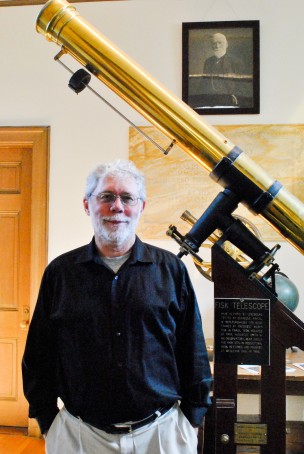
Shannon Welch/Photo Editor
As the size of the student body has grown, many academic departments have also expanded in size. Chair of Astronomy and Director of Graduate Studies William Herbst, who has been at Wesleyan for 34 years, recalled the formerly smaller size of his department.
“When I came [in 1978], there was only one other astronomy professor,” Herbst said. “Now we have five faculty members and will soon have two post-docs, so [that’s] seven PhD astronomers on campus, which is a really large number. Compared to similar institutions, we’re a good-sized, strong department.”
Given that the Film Studies Department did not exist when Basinger arrived at Wesleyan, its growth is the most significant.
“The first decade I was here we developed courses in film, the second decade we put them together into a program of study that was a subset of a larger major, the third decade we stepped out on our own and became a program, and the fourth decade we became a department,” Basinger said.
Despite changes over the years, professors have longsince had the freedom to design their own courses. For example, Seamon’s course offerings have included everything from teaching a freshman seminar based on his own version of Introductory Psychology to creating a course about human memory in contemporary films.
“Wesleyan has afforded me the opportunity and resources to keep re-inventing myself over the decades,” he said.
Wesleyan has demonstrated a consistent commitment to interdisciplinary thinking as a way to strengthen each department.
“It’s really fascinating to me how people can make connections between things that aren’t necessarily meant to be connected but end up making a lot of sense together,” Cohan said. “[Natural Sciences and Mathematics] professors now have various teaching collaborations that go from biology to philosophy to history and to the arts.”
The University has apparently been supportive of professors who want to teach and do research at the same time. Herbst has been studying star and planet formation to better understand how and when the Earth formed; Yohe has been studying the economics of climate change full-time since 1982; and Cohan was able to use what he learned from teaching a course on ecology to develop a model of the origin of bacterial species.
In addition to enjoying opportunities for research, most professors seem to have stayed at Wesleyan for so long because of their students’ passion.
“They’re smart, funny, skilled, creative, analytical, surprising, and challenging,” Basinger said. “They are a never-ending source of inspiration for a professor’s teaching and scholarship.”